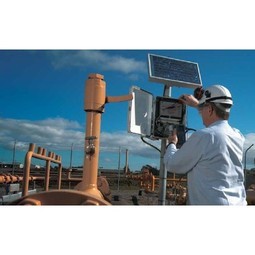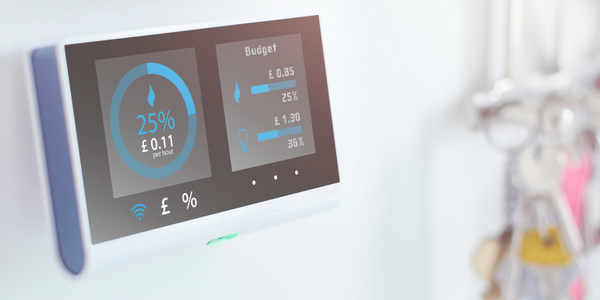公司规模
Mid-size Company
地区
- America
国家
- United States
产品
- NetMotion Mobility
技术栈
- Windows 7
实施规模
- Enterprise-wide Deployment
影响指标
- Productivity Improvements
- Cost Savings
技术
- 网络与连接 - 蜂窝
适用行业
- 公用事业
适用功能
- 现场服务
用例
- 远程资产管理
服务
- 系统集成
关于客户
4-County Electric Power Association 是一家非营利性电力配送合作社,为密西西比州东北部的 50,000 名成员提供服务,自 1939 年以来一直提供价格合理且可靠的电力。4-County Electric 雇用的 70 多名现场员工驾驶的车辆配备了为客户服务所需的一切,包括对他们的工作效率至关重要的联网笔记本电脑。然而,合作社农村地区的蜂窝盲区经常导致员工失去与关键应用程序的连接。该公用事业公司选择了 NetMotion Mobility 来保持员工的工作效率,无论蜂窝信号强度如何。现在,线路工人和其他现场工作人员只需启动一次笔记本电脑即可获得持续一整天的连接。
挑战
4-County Cooperative 包括一家总部和五个地区办事处,分布在密西西比州的 9 个县。现场团队依靠互联网连接访问公用事业的核心工作订单系统,该系统可针对风暴修复等事件制定高效的工作计划。工人们配备了 Windows 7 笔记本电脑和 Windows 软件。依靠蜂窝连接访问工作应用程序,笔记本电脑经常会因为网络覆盖不佳而无法连接,导致工作订单进度停滞。一些线路工人非常沮丧,他们放弃了损坏的笔记本电脑,转而使用笔和纸,直到有时间打开 IT 票证。面对不满意的员工和经常无法实现其预期目的的系统,Critcher 和他的团队意识到他们需要一种更可靠的方法来让团队在现场时保持与互联网的连接。
解决方案
4-county 与其他当地机构讨论了如何应对密西西比州农村地区的连接挑战。他们从州公路巡逻队了解到,Mobility 通过创建安全可靠的移动 VPN 隧道让警员保持连接。警员巡视时,应用程序会暂停但不会断开连接。“这听起来像是最终的解决方案,所以我们进行了试验以确保万无一失,”Critcher 说。从用户的角度来看,过渡到 Mobility 是无缝的。Lineman 不必学习新的步骤来使用它;事实上,他们甚至不知道它在那里。他们只需登录,他们的应用程序就会完美运行。“他们注意到的只是每次登录时都有连接,”Critcher 补充道。“这立即让我们的帮助台电话安静下来。”
运营影响

Case Study missing?
Start adding your own!
Register with your work email and create a new case study profile for your business.
相关案例.

Case Study
IoT Solutions for Smart City | Internet of Things Case Study
There were several challenges faced: It is challenging to build an appliance that can withstand a wide range of voltage fluctuations from as low at 90v to as high as 320v. Since the device would be installed in remote locations, its resilience was of paramount importance. The device would have to deal with poor network coverage and have the ability to store and re-transmit data if networks were not available, which is often the case in rural India. The device could store up to 30 days of data.

Case Study
Automation of the Oguz-Gabala-Baku water pipeline, Azerbaijan
The Oguz-Gabala-Baku water pipeline project dates back to plans from the 1970’s. Baku’s growth was historically driven by the booming oil industry and required the import of drinking water from outside of the city. Before the construction of the pipeline, some 60 percent of the city’s households received water for only a few hours daily. After completion of the project, 75 percent of the two million Baku residents are now served around the clock with potable water, based on World Health Organization (WHO) standards. The 262-kilometer pipeline requires no pumping station, but uses the altitude differences between the Caucasian mountains and the capital to supply 432,000 m³/d to the Ceyranbatan water reservoir. To the people of Baku, the pipeline is “the most important project not only in 2010, but of the last 20 years.”

Case Study
GPRS Mobile Network for Smart Metering
Around the world, the electricity supply industry is turning to ‘smart’ meters to lower costs, reduce emissions and improve the management of customer supplies. Smart meters collect detailed consumption information and using this feedback consumers can better understand their energy usage which in turn enables them to modify their consumption to save money and help to cut carbon emissions. A smart meter can be defined in many ways, but generally includes an element of two-way communication between the household meter and the utility provider to efficiently collect detailed energy usage data. Some implementations include consumer feedback beyond the energy bill to include online web data, SMS text messages or an information display in consumers’ premises. Providing a cost-effective, reliable communications mechanism is one of the most challenging aspects of a smart meter implementation. In New Zealand, the utilities have embraced smart metering and designed cost effective ways for it to be implemented. The New Zealand government has encouraged such a move to smart metering by ensuring the energy legislation is consistent with the delivery of benefits to the consumer while allowing innovation in this area. On the ground, AMS is a leader in the deployment of smart metering and associated services. Several of New Zealand’s energy retailers were looking for smart metering services for their residential and small business customers which will eventually account for over 500,000 meters when the multi-year national deployment program is concluded. To respond to these requirements, AMS needed to put together a solution that included data communications between each meter and the central data collection point and the solution proposed by Vodafone satisfied that requirement.

Case Study
NB-IoT connected smart meters to improve gas metering in Shenzhen
Shenzhen Gas has a large fleet of existing gas meters, which are installed in a variety of hard to reach locations, such as indoors and underground, meaning that existing communications networks have struggled to maintain connectivity with all meters. The meter success rate is low, data transmissions are so far unstable and power consumption is too high. Against this background, Shenzhen Gas, China Telecom, Huawei, and Goldcard have jointly trialed NB-IoT gas meters to try and solve some of the challenges that the industry faces with today’s smart gas meters.

Case Study
British Gas Modernizes its Operations with Innovative Smart Metering Deployment
The UK government has mandated that smart meters are rolled out as standard across Great Britain by end of 2020, and this roll-out is estimated to create £14 billion in net benefits to the UK in consumer energy savings and lower energy generation demand, according to the Oxford Economics report, “The Value of Smart Metering to Great Britain.” While smart-metering systems have been deployed in many countries, the roll-out in Great Britain is unique because it is led by energy retailers, who have responsibility for the Electricity and Gas meters. The decision to have a retailer-led roll out was made by DECC (Department of Energy and Climate Change) to improve customer experience and drive consumer benefits. It has also led to some unique system-level requirements to support the unique local regulatory model.

Case Study
OneWireless Enabled Performance Guarantee Test
Tata Power's power generation equipment OEMs (M/s BHEL) is required to provide all of the instrumentation and measurement devices for conducting performance guarantee and performance evaluation tests. M/s BHEL faced a number of specific challenges in conducting PG tests: employing high-accuracy digital communications for instrumentation, shortening setup and dismantling time, reducing hardware required, making portable instrument setup, avoiding temporary cabling work and the material waste costs







